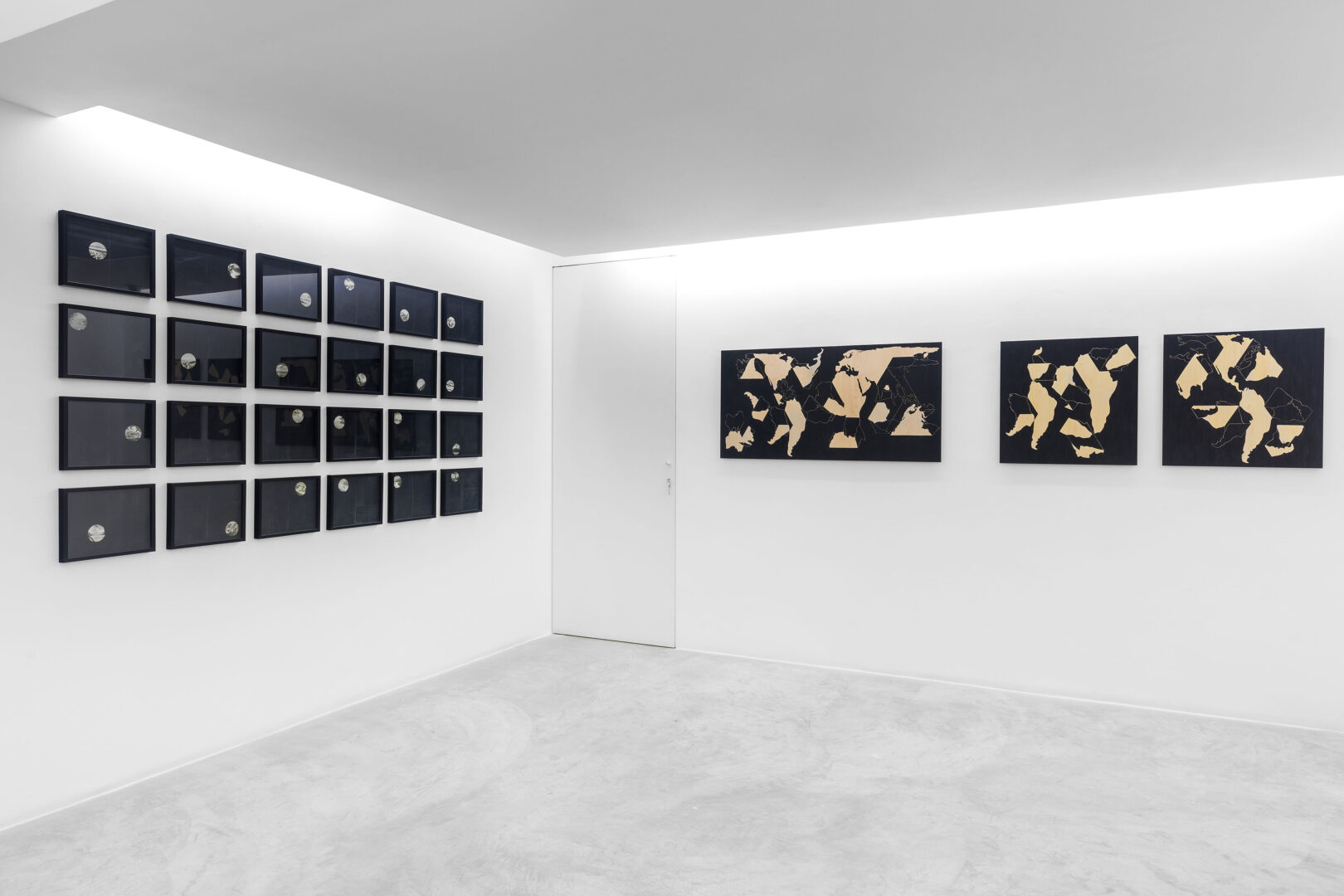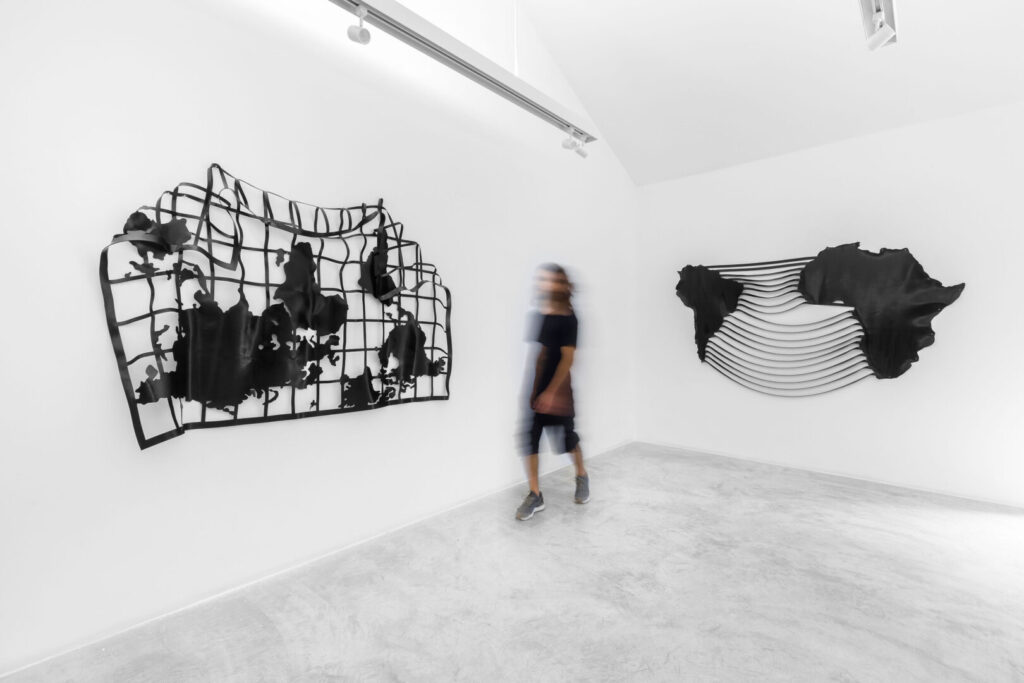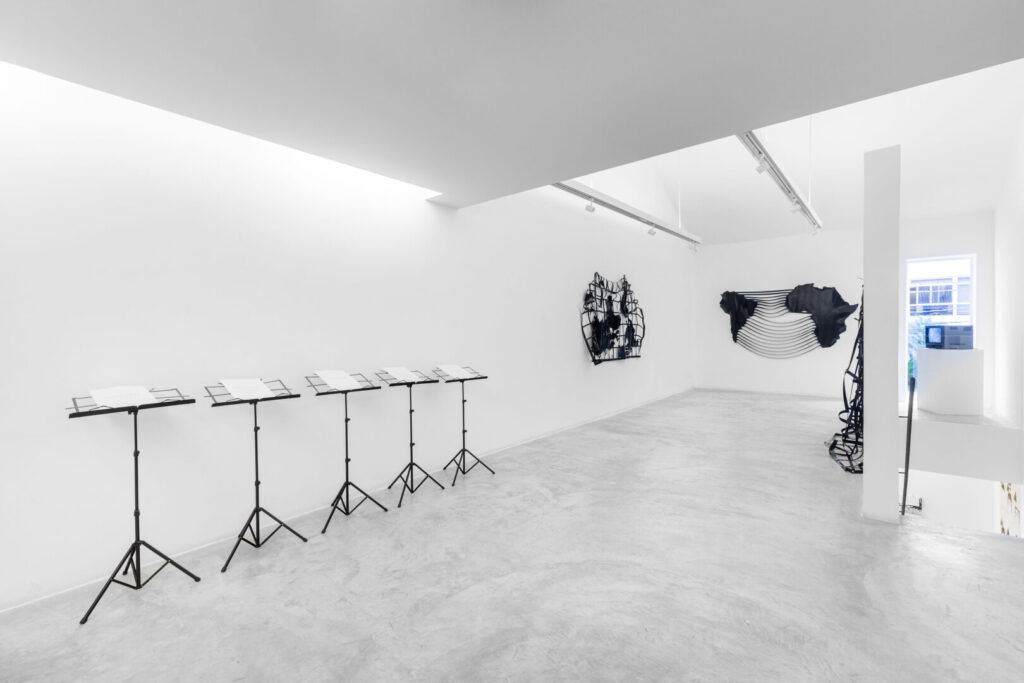
The exhibition Onde a Terra Dobra (Where the Earth bends) by Marina Camargo presents a set of works whose common element resides in the poetic-imaginary relationship they establish with cartographic science, based on interventions and recombinations that unfold the multiple meanings latent in the exercise of making maps. As a knowledge that goes back to prehistory, cartography, at its core, is characterized by the translation of a three-dimensional and spherical reality into the two-dimensional plane of representation. Therefore, even though throughout History and the development of technology, such knowledge is inserted in the field of scientific knowledge, the choices that are necessarily made to carry out this process of abstract translation/interpretation of the physical space create gaps that implode, from the start, its objective character. No matter how much new software allows greater accuracy in mapping the surface, the earth follows its constant geological rhythm of mutation, slowly shifting its lines and borders. Therefore, it is not an exaggeration to assume that the will to dominate nature, the foundation of modern thought, has an illusory and fictional side.
Camargo explores in her works the ludic element that originates in the gaps between the drawing of maps (or any form of representational language) and its interpretation, based on the experience of displacement that is also personal and corporeal. As someone who lives between two cultures, in Brazil and Germany, the artist perceives the distortions in these representations that, in the end, have a narrative structure underlying their supposed utilitarian value. Each choice, each trace, and each form engenders a distinct look at History that is otherwise not universal, as the set Notes on Universal History (2018) shows. In this work, the artist appropriates photographic images from an old atlas and covers them with black spray paint, leaving a small “window” in each photo, like a fragment that potentiates the sense of cutout that presides over all vision.

Moving borders, imagining new physical and mental spaces, bending the rigid, and reconstituting the physical and mutating body by distorting the abstract and closed form, is the game that constitutes the sculptures of the series Soft-Maps (2019-2023). In these works, the artist starts from the exact drawing of the continents that, when transposed to rubber, lose the fixity of the maps or create other forms. The organic appearance of these sculptures and their material remind the viewer of Lygia Clark’s SoftWorks. Also, for Marina Camargo, the reconstitution of the tactile dimension of spatial experience is central to understanding her poetics. We “know” the world through body friction, touch, the eye, and through embodied senses. This understanding cannot be contained in a purely distanced abstraction, as the video Sensing latitudes and longitudes (2021) points out. In this sense, art, as a vehicle of this experience through language (or languages), can transform uncertainty and change into material for new imaginary organizations, as in the set of drawings on wooden sheet Unfolded Geographies (2020-2023).
In Songlines (2019-2021), the artist transforms fragments of drawings of political borders between countries into notes for a score that different composers can freely interpret. This gesture, minimal and delicate, reminds us that every significant translation entails an addition of meaning to what it translates, like a utopian opening to the infinite, after experiencing the unprecedented situation of forced isolation, the effect of which we can still not measure, Marina Camargo’s work glimpses into the recreation of less rigid relations beyond established borders, a path to follow in the post-pandemic era.

Photos by Estudio em Obra